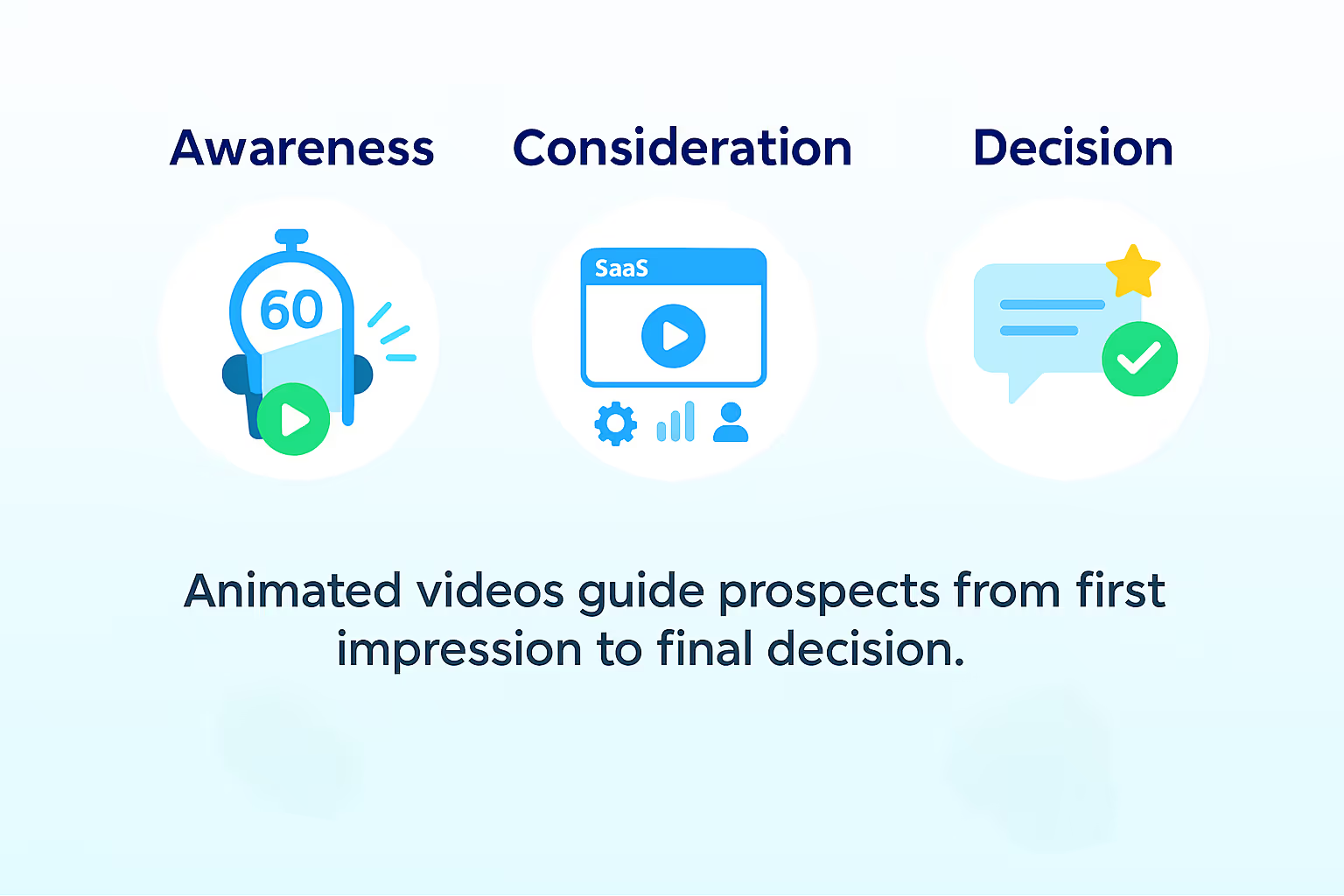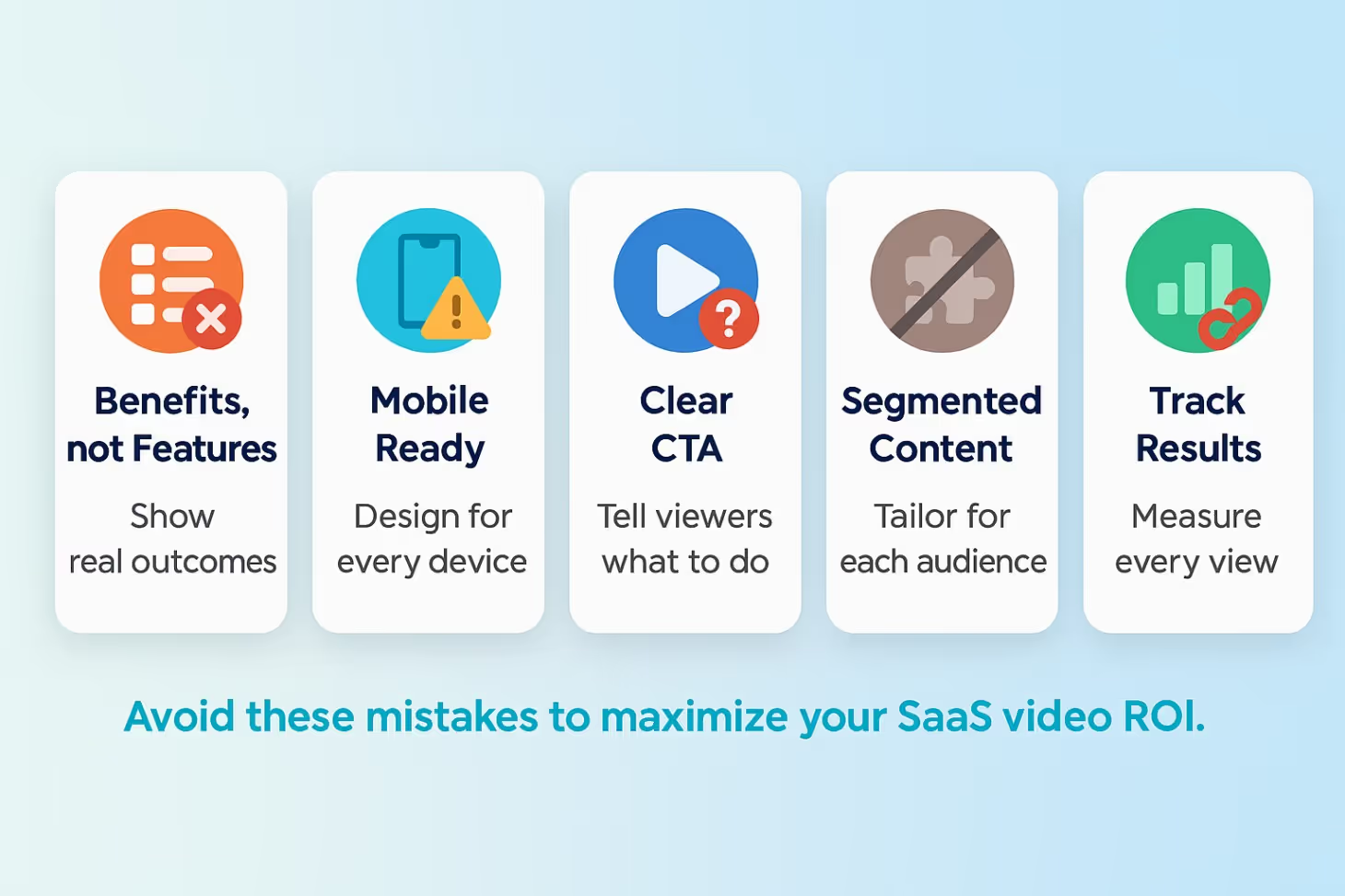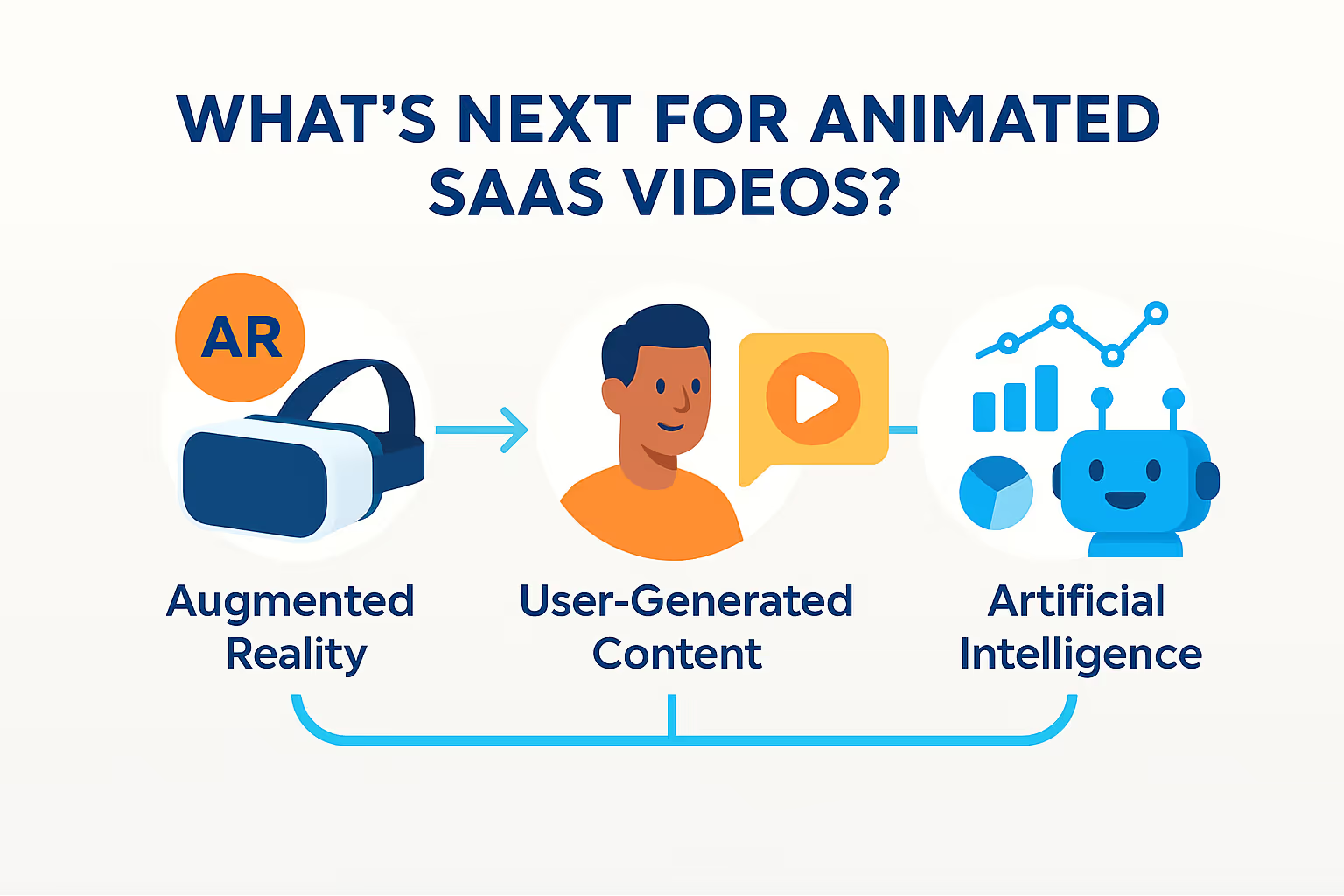By 2024, the SaaS market had soared to an astonishing $250.8 billion, seven times what it was back in 2015. In today’s crowded market, companies are scrambling to get noticed and many are turning to animated product videos as a way to boost their SaaS conversions. Now that 91% of businesses are tapping into video for marketing, animated content has become a go-to strategy, turning complicated software features into engaging visual stories that actually get results. Animation’s real magic is that it can break down even the trickiest technical ideas and, at the same time, forge an emotional bond with viewers, something plain old static content just can’t pull off.
Why Animated Videos Will Be a Game Changer for SaaS Companies in 2025
The way people buy SaaS these days looks nothing like it used to. Decision-makers these days are overwhelmed with choices, so grabbing and keeping their attention has become more challenging than ever. A whopping 95% of businesses now rely on SaaS solutions, making the market more crowded than ever and standing out has become absolutely essential.
Animated product videos tackle this problem directly, turning complex, abstract software features into clear, visually engaging experiences that people can actually understand. Unlike old-school marketing materials, animation brings complex workflows to life, highlights how different systems work together, and paints vivid before-and-after pictures, all in a way that actually connects with people on an emotional level.
The stats don’t lie: adding videos to your landing pages can boost conversion rates by as much as 80%, and 88% of video marketers say video content has helped them drum up new leads. For SaaS businesses in particular, product demo videos can boost conversion rates by as much as 85%.
Why Animation Packs Such a Punch When It Comes to Conversions
To really get why animated videos pack such a punch, you have to look at what’s happening both in our minds and in the real world. When it comes to how our brains work, people remember a whopping 95% of what they see in a video, but only about 10% stick when they read the same information as text. This huge gap in retention means people actually understand your product better and are more likely to want to buy it.
Animation really shines in the B2B SaaS world because it lets you mimic real user interactions, giving potential customers a clear, hands-on look at how your software tackles their unique problems. Being able to show, not just tell, is essential when you’re selling something customers can’t actually hold or see in person before they buy.
Storytelling through animation isn’t just a nice touch, it’s actually a key driver when it comes to turning viewers into customers. Animated videos turn vague ideas into something real and meaningful by weaving in familiar situations and characters viewers can actually relate to. It’s that emotional spark that turns casual viewers into genuinely interested prospects, people who are actually ready to move forward in your sales process.

How Animated Videos Fit Into Every Step of Your Customer Journey
Awareness Stage: Grabbing Their Attention Right From the Start
Right at the start of your funnel, animated teaser videos are fantastic for catching people’s attention. Keep these videos short and lively. Zero in on the problems your audience faces every day, then quickly show them exactly how your solution can help. The trick is to make content that really speaks to your audience’s everyday struggles, without bogging them down in a sea of technical jargon.
The best awareness-stage videos usually clock in at just 30 to 60 seconds and use clever metaphors or analogies to break down tricky ideas so viewers get them right away. Take a project management SaaS, for instance, they might compare their platform to a conductor leading an orchestra, showing how it brings the whole team together in perfect harmony.
Consideration Stage: Taking a Closer Look with In-Depth Demos
After prospects grasp what problem your software actually solves, they’ll want to see exactly how it works in action. This is the moment when in-depth product demo videos really come into their own. Aim for videos between one and two minutes that highlight key features, but always keep the spotlight on how those features actually help your users, not just the technical details.
This is the point where interactive features really start to shine. With today’s video platforms, viewers can dive into the features that interest them most, building their own self-guided tours tailored to their needs and preferences. Being able to personalize like this really ramps up both engagement and conversion rates.
Decision Stage: Earning Their Trust and Giving Them a Reason to Act Now
When it’s time to seal the deal, animated customer success stories and testimonial videos deliver the social proof that helps prospects take that final step. These videos need to spotlight real results, showing the kinds of gains and return on investment that other companies have actually seen with your solution.
What really makes the difference is blending genuine authenticity with compelling visual storytelling. Instead of just putting people on camera, animated testimonials bring the customer’s story to life, illustrating their journey with clear before-and-after moments that make the results feel real and easy to relate to.
How to Create Animated Videos That Actually Drive Conversions: Step by Step Guide
Step 1: Get clear on who you’re talking to and what you want to achieve.
Before you dive into making animated content, take the time to really get to know your audience, what they struggle with, what they like, and how they make decisions. Dig into your CRM and break out your prospects by things like job role, company size, and where they are in the buying process, so every video you create feels tailored to what each group actually cares about.
Make sure you know exactly what you want each video to achieve and how you’ll measure its success. Are you hoping to get more people signing up for trials, see a jump in demo requests, or speed up the time it takes to close deals? Clear goals steer your creative choices and make it much easier to know if you’re actually hitting the mark.
Step 2: Shape the Story You Want to Tell
The most effective animated videos rely on tried-and-true storytelling techniques. For SaaS content, the problem-solution-outcome approach really hits the mark. Begin by spotlighting a problem your audience actually faces, then show how your software steps in to solve it and wrap things up by illustrating the real, positive changes they can expect.
Stick to the point, and always highlight what’s in it for your audience. Studies show that the sweet spot for video length is typically between 30 seconds and 2 minutes, though what works best really depends on who you’re trying to reach and where you’re sharing the content.
Step 3: Make Your Message Crystal Clear Visually
What really sets animation apart is how effortlessly it can take something complicated and make it feel simple, using clever visuals and smooth motion graphics to bring tricky ideas to life. Stick with colors that match your brand, and make sure every visual detail has a clear role in telling your story.
Don’t bombard your viewers with information all at once. Instead, introduce features one at a time so viewers have a chance to take in each idea before you move on.
Step 4: Make sure your videos are ready to shine on every platform.
Don’t wait until your video is finished to think about where it’ll go, map out your distribution strategy while you’re still in the production stage. Each platform has its own quirks, what works for one might fall flat on another, so you’ll need to tweak your video’s format, length, and messaging. A well-rounded video marketing strategy means creating different versions tailored for landing pages, social media, email blasts, and sales presentations.
Want to dive deeper? Smarter video distribution tactics can help your content go further and make a bigger impact across every channel you use.
Think about breaking your content into smaller pieces you can easily reuse on different platforms. For example, you might take a full-length product demo and chop it into bite-sized, feature-focused clips that are perfect for sharing on social media.

The Most Common Animated Video Mistakes and How You Can Steer Clear of Them
Mistake 1: Talking about features when you should be showing real benefits
A lot of SaaS companies end up making videos packed with features, but forget to actually connect with people on an emotional level. Rather than rattling off a list of features, show people how your software actually makes their work easier and delivers real results for their business.
Mistake 2: Overlooking how your videos look and perform on mobile
As more people watch videos on their phones, overlooking mobile optimization can seriously hurt your engagement rates. Make sure your animations look sharp and easy to read, no matter what kind of device people are using.
Mistake 3: Forgetting to tell viewers exactly what to do next
No matter how captivating your animated video is, it won’t accomplish much if you don’t spell out exactly what viewers should do next. Make sure each video spells out exactly what you want viewers to do next and that it ties directly into your conversion goals.
Mistake 4: Trying to Please Everyone with the Same Video
When you try to make videos that please everyone, you usually end up with content that doesn’t truly connect with anyone. Create content that speaks directly to the unique needs of each audience segment and specific use case.
Mistake 5: Not keeping track of how your videos are actually performing
A lot of companies jump into making animated videos but forget to set up solid tracking from the start. Set up thorough analytics right from the beginning so you can track engagement, conversion rates, and ROI as you go.
How Slack Used Animation to Transform Its Success
Slack’s animated explainer video is widely regarded as one of the most successful B2B video marketing campaigns to date. Instead of rattling off technical features, the video shared a story anyone in an office could relate to highlighting real communication struggles at work and showing how Slack helped teams finally get on the same page.
What really made the video a hit was its emphasis on telling a relatable story instead of simply showing off product features. When Slack’s video transformed a hectic office into a well-oiled, productive team, it struck an emotional chord with millions of people who’d been there themselves. The video quickly went viral, sparking a wave of organic sharing and helping the company gain traction in its early days.
This success shows just how much more impact you can make when you lead with story and emotion instead of just rattling off product features. That video didn’t just make a splash, it became a cornerstone of Slack’s brand, still shaping the way the company does video marketing even now.
Taking It Up a Notch: How Personalization and Interactivity Change the Game
These days, more and more animated video strategies are weaving in personalization and interactive elements to keep viewers engaged and ultimately, to drive up those conversion rates. With CRM data in hand, companies can now craft video messages that greet prospects by name and speak directly to the unique challenges each one faces.
Interactive video elements allow viewers to choose their own journey through your content, exploring features most relevant to their use case. This self-guided approach increases engagement time and provides valuable insights into prospect interests and buying intent.
Emerging technologies like AI-powered video personalization are making it possible to create hundreds of customized animated videos efficiently. These tools can tweak your messaging, visuals, and calls to action on the fly, tailoring everything to each viewer’s demographics, company details, and even how they interact with your content.
Tracking Results and Making Improvements
If you want your animated video campaigns to really work, you’ve got to track their performance closely and keep tweaking things along the way. Don’t just look at surface-level stats like views or how many people finish your videos, pay close attention to conversion numbers that actually impact your bottom line.
You’ll want to keep an eye on metrics like how many leads you’re generating, how often people request demos, what percentage sign up for trials, and most importantly, how many closed deals you can actually tie back to your video efforts. Advanced attribution modeling lets you see exactly how watching animated videos shapes your customers’ decisions at every stage of their journey.
Trying out different video versions, calls to action, and ways of sharing your content is one of the best ways to figure out what actually works. Play around with things like how long your video runs, the way you tell your story, the look and feel of your visuals, and where you share your content, then see which combinations actually click with your audience.
These days, the savviest SaaS companies are letting video engagement data shape how they approach sales. If a prospect spends a lot of time watching a product demo, that’s a clear signal for sales teams to move them to the top of the list and customize their follow-up to match what caught the prospect’s interest.

What’s Next for Animated SaaS Videos?
When animation meets cutting-edge technology, a whole world of fresh opportunities opens up for SaaS marketers. We’re starting to see SaaS videos experimenting with augmented reality (AR) and virtual reality (VR), opening the door to immersive product experiences that just weren’t possible before.
Blending user-generated content with polished, professional animation is quickly catching on as a popular new trend. More and more companies are mixing real customer testimonials and actual usage stories with animated graphics and overlays, striking a balance between authenticity and a polished, professional look. Taking this approach could actually double your conversion rates compared to old-school marketing materials.
Artificial intelligence is shaking up video personalization, making it possible to create content that automatically shifts and adapts to what each viewer likes and how they interact. As these technologies keep evolving, animated videos are only going to get smarter and more impactful.
Insights:
What do most companies miss when it comes to animated video success? Making sure those videos actually tie in with their current sales and marketing systems. When companies treat animated videos as one-off pieces instead of weaving them into their bigger sales and marketing efforts, they end up leaving a lot of potential leads and conversions on the table. Top SaaS companies don’t just collect video engagement data, they plug it straight into their CRM. That way, sales teams can have smarter, more relevant conversations with prospects, while marketing can tailor content more precisely to what viewers are actually watching.
Questions People Often Ask
Q: What’s the ideal length for an animated SaaS product video?
A: Most research suggests the sweet spot for video length is between 30 seconds and 2 minutes with nearly three-quarters of marketers saying that’s when you get the best engagement. But really, the best video length comes down to where you’re sharing it and how complicated your message is.
Q: How much does it usually cost to have a professional animated video made?
A: Creating a SaaS product video usually runs anywhere from $900 to $4,000 per minute. Startups on a tight budget often keep costs below $1,400 per minute, while bigger, established companies are willing to spend $3,100 or more for top-tier quality.
Q: So, how can you actually tell if your animated videos are paying off?
A: Keep an eye on the numbers that really matter, like how many leads you’re bringing in, how often people request demos, who’s signing up for trials, and how many deals you can actually link back to your videos. Advanced attribution modeling lets you see how watching a video actually shapes a customer’s path from first click to final decision.
Q: Do animated videos need to take the place of live-action content altogether?
A; Not at all, animated and live-action videos each have their own unique roles to play. Animation is perfect for breaking down complicated ideas, but when it comes to building trust, nothing beats seeing real people on screen. The best results usually come from mixing both formats in a thoughtful way.
A Handy Checklist to Make Your Animated Videos a Success
If you want your animated videos to really make an impact, here’s a tried-and-true framework to guide you:
- Audience Research: Pin down exactly who your viewers are, what challenges they’re facing, and how they make decisions.
- Objective Setting: Decide exactly what you want each video to accomplish at every stage of your customer journey and make sure you can actually measure it.
- Narrative Development: Craft stories that hook your audience by showing a real problem, how your solution fixes it, and the positive results, so viewers actually care.
- Visual Design: Stick with a consistent look and feel for your brand, and reveal information gradually to keep viewers interested.
- Multi-Channel Optimization: Tweak your videos for each platform so you get the most out of every channel.
- Performance Tracking: Set up thorough analytics so you can see exactly how your videos are affecting conversions and ROI.
- Continuous Testing: Try out different versions, swap headlines, visuals, or calls to action to see what really clicks with your audience.
As the SaaS market keeps growing and competition gets fiercer, animated product videos aren’t just nice to have, they’re quickly becoming a must for any company that wants lasting success. The companies that really get the hang of animated video will be the ones turning curious prospects into loyal customers ahead of the competition.
Thinking about giving your SaaS conversions a serious boost with animated product videos? At VideoPulse, we bring complicated software features to life with animated videos that turn them into engaging, easy-to-understand stories to help you win over more customers. We’ve helped all kinds of SaaS companies boost their conversion rates and grow faster by putting our tried-and-true framework to work.
Ready to see what animated videos can do for your sales? Get in touch with VideoPulse to book a strategy session and find out how we can help transform your sales process.

